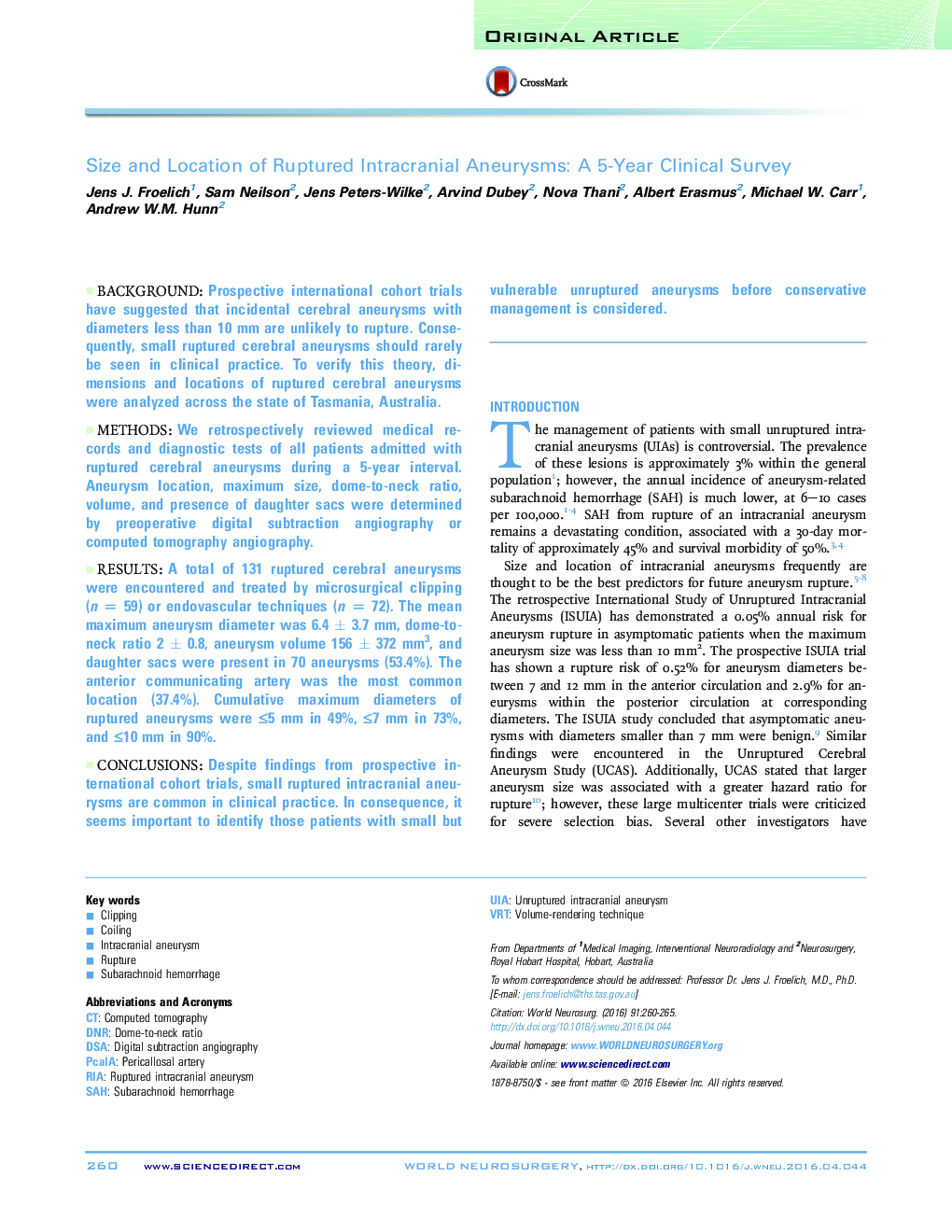| Article ID | Journal | Published Year | Pages | File Type |
|---|---|---|---|---|
| 3094549 | World Neurosurgery | 2016 | 6 Pages |
BackgroundProspective international cohort trials have suggested that incidental cerebral aneurysms with diameters less than 10 mm are unlikely to rupture. Consequently, small ruptured cerebral aneurysms should rarely be seen in clinical practice. To verify this theory, dimensions and locations of ruptured cerebral aneurysms were analyzed across the state of Tasmania, Australia.MethodsWe retrospectively reviewed medical records and diagnostic tests of all patients admitted with ruptured cerebral aneurysms during a 5-year interval. Aneurysm location, maximum size, dome-to-neck ratio, volume, and presence of daughter sacs were determined by preoperative digital subtraction angiography or computed tomography angiography.ResultsA total of 131 ruptured cerebral aneurysms were encountered and treated by microsurgical clipping (n = 59) or endovascular techniques (n = 72). The mean maximum aneurysm diameter was 6.4 ± 3.7 mm, dome-to-neck ratio 2 ± 0.8, aneurysm volume 156 ± 372 mm3, and daughter sacs were present in 70 aneurysms (53.4%). The anterior communicating artery was the most common location (37.4%). Cumulative maximum diameters of ruptured aneurysms were ≤5 mm in 49%, ≤7 mm in 73%, and ≤10 mm in 90%.ConclusionsDespite findings from prospective international cohort trials, small ruptured intracranial aneurysms are common in clinical practice. In consequence, it seems important to identify those patients with small but vulnerable unruptured aneurysms before conservative management is considered.
